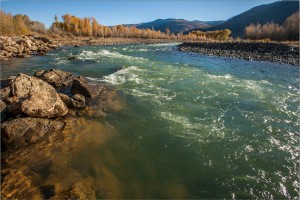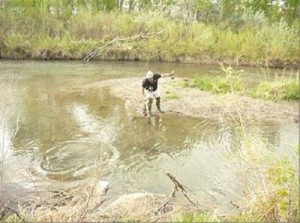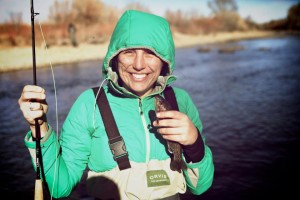As spring runoff rises and the flow of water increases, wading across a river becomes more dangerous. Along with raging flow rates, the ice cold water could lead to hypothermia in the event of a fall. Taking the proper precautions could not only make your day on the river enjoyable, but they could save your life.
Equipment
Borrowing the mantra from the Boy Scouts, "Be Prepared." When heading to the river, make sure you have all of your equipment- including waders, proper wading boots, a wading belt and in some cases a wading staff. All of these items will help you stay dry and above the water.
Your waders should be free of rips or tears and the seams should be tightly sealed together. Any amount of water that penetrate the waders can weigh down each step and anchor in place, requiring more effort to move across safely. Using a wading belt can also help keep the waders free from water. These belts are designed to tightly cinch the waders around your waist and keep water out but air in.
Using the proper wading boots can help keep you upright through the higher flow rates. When wading faster, deeper waters using metal studded boots is a good option as they provide extra grip in slippery situations. These type of boots are also good for hiking around, however the metal studs can be slippery on dry rock.
If the water becomes too fast, using a wading staff is the best way to stay vertical in the rapids. Using the stick offers a third support- a vital piece to staying safe on the water. When taking a stride without a staff, the points of contact with the bottom is reduced to one. When using a wading staff, there are always two points. This piece of equipment can also lower stress and anxiety levels related to crossing high levels of water.
Methods
When wading across a potentially dangerous river the best advice for anglers is to go slow. According to an article by Orivs, "This has broader implications than you may think. It obviously includes being careful while wading, but also encompasses taking time to evaluate current conditions and particularly to evaluate conditions when you are visiting unfamiliar rivers or locations." Taking your time to enter a river at a safe crossing can allow you take it slow and with experience, slow is smooth and smooth is fast.
The best place to cross a river is at the tail of a pool or the head of a wide riffle where the water is usually the most shallow.
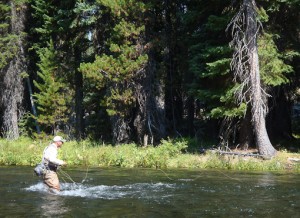
While taking it slow across the river, make sure not to head directly across. It's best to wade at a slight upstream angle. This allows constant pressure back onto the water's flow, allowing you to lean into each step. If wading across downstream, the pressure of the water adds to your downstream momentum and could easily push you over into the current or a deep hole.
Wading upstream also ensures that if something happens and you need to turn around, you are able to do so safely. When turning around in strong currents, it's advised to turn upstream, keeping the force back on the river. Just like wading across, turning downstream will allow the current to hit the back of your legs and potentially make them buckle- resulting in a fall.
Just like low flow wading, it's best to keep the movement of the legs at a shuffle step or sidestep. This ensures that the weight and balance are always on the stationary foot planted firmly in the riverbed. Stepping normal can cause your balance to shift, making it easier for the river to knock you over.
Staying Safe
In the event of a fall, make sure that you keep your feet ahead downstream and use the whitewater seated position. If there are submerged boulders or trees, your feet will hit and you can use them to push off. Stay with your feet out until it is safe to stand up or you can safely grab onto something to stabilize yourself.
If the water is cold, make sure to get out of the wet clothes as soon as possible in order for your body temperature to warm up. Staying in the wet, cold clothes will lead to an increased chance of hypothermia.
Remember that fly fishing should be fun, not a survival adventure. if you're not comfortable with the situation, don't push it. There will be another day and if it doesn't look safe enough to cross there is no need to test the waters... literally.
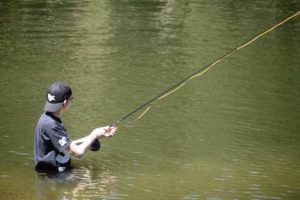 The first day began with a basic entomology class on bugs and their life cycles. Volunteers and camp leaders also showed the students what fish eat, and the flies that represent these species and phases. All of this was don in order to give students a better understanding of what the term “fly” fishing actually means.
The first day began with a basic entomology class on bugs and their life cycles. Volunteers and camp leaders also showed the students what fish eat, and the flies that represent these species and phases. All of this was don in order to give students a better understanding of what the term “fly” fishing actually means.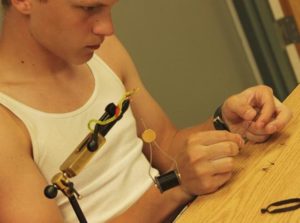


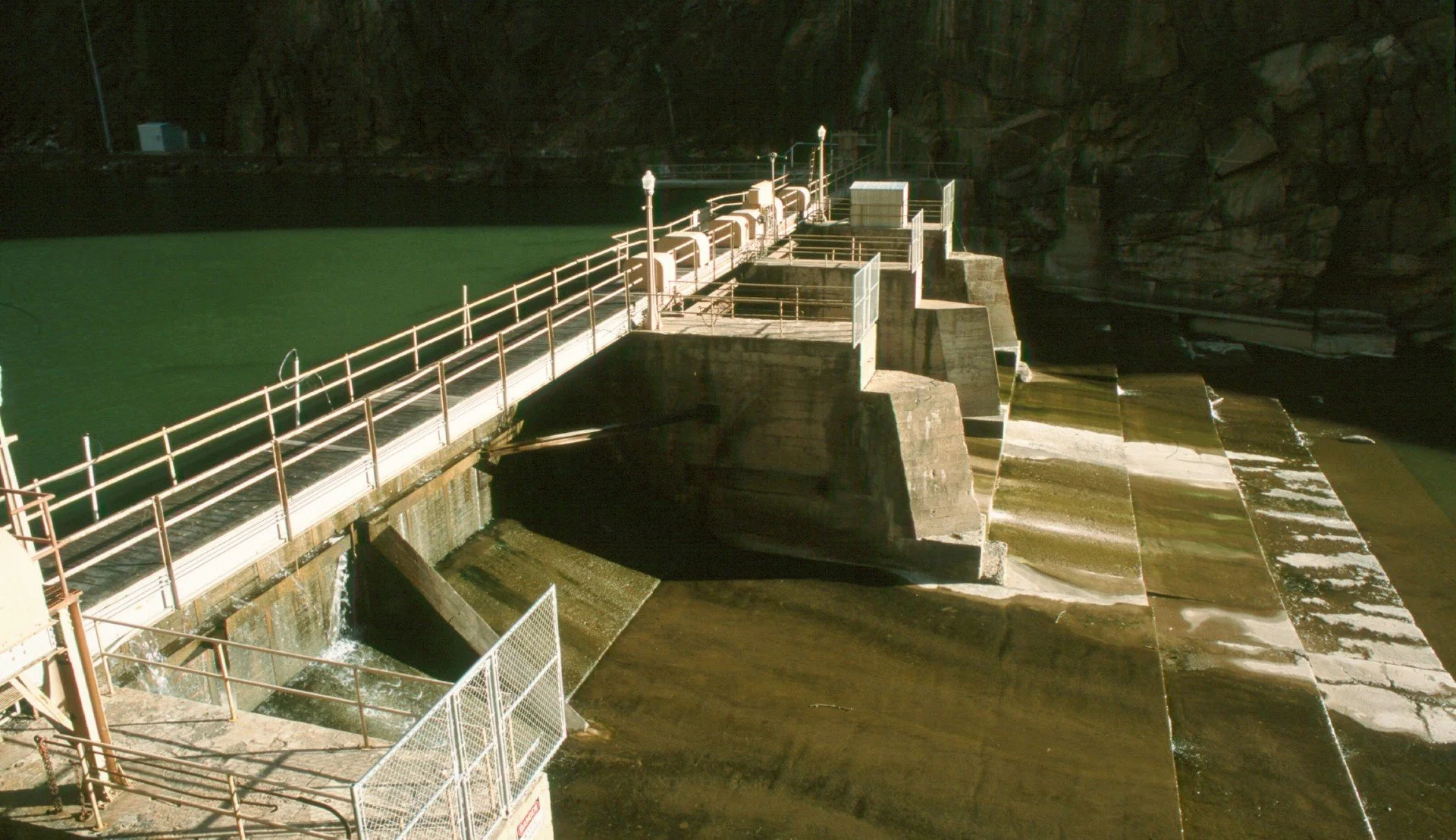
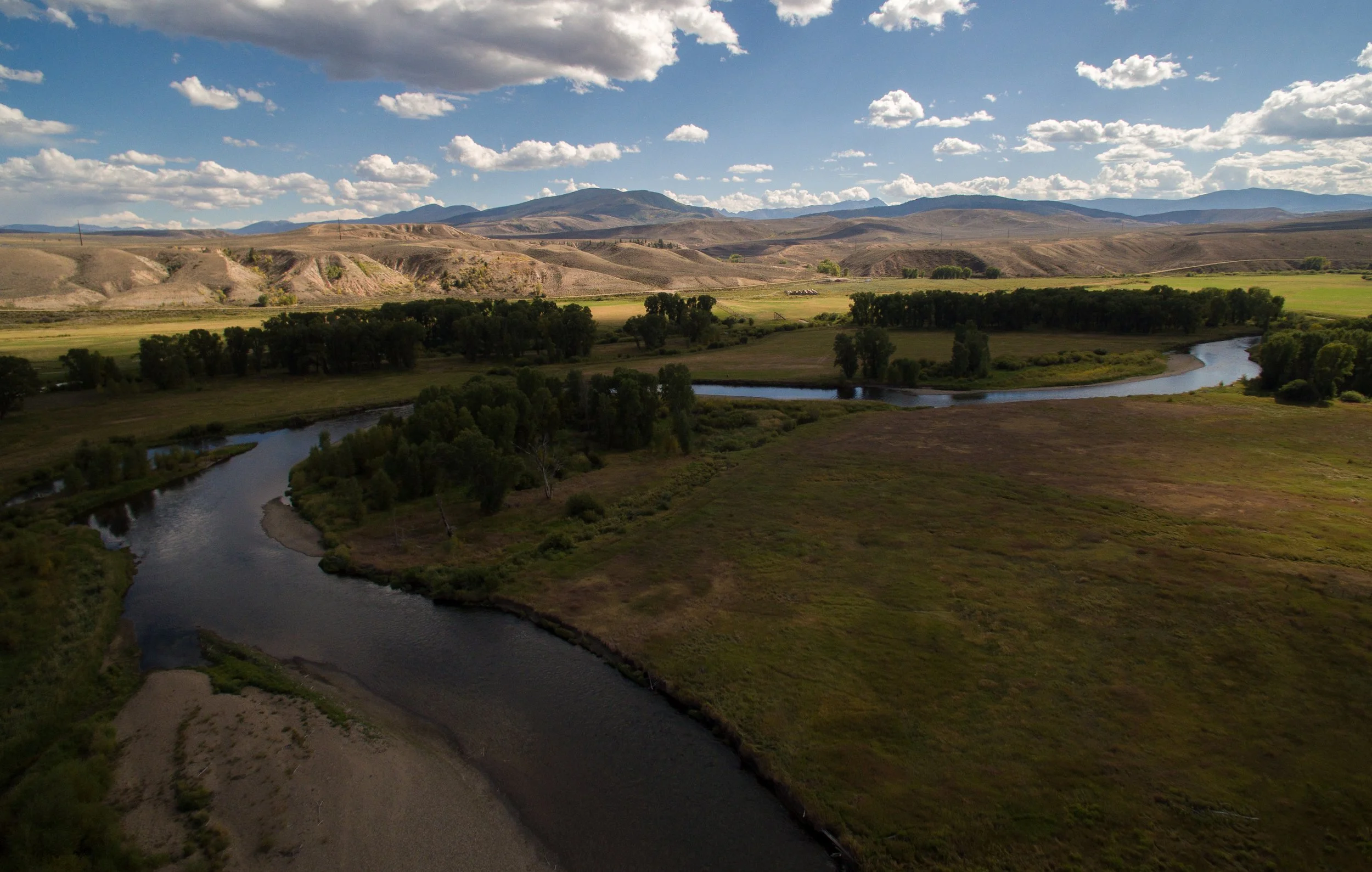
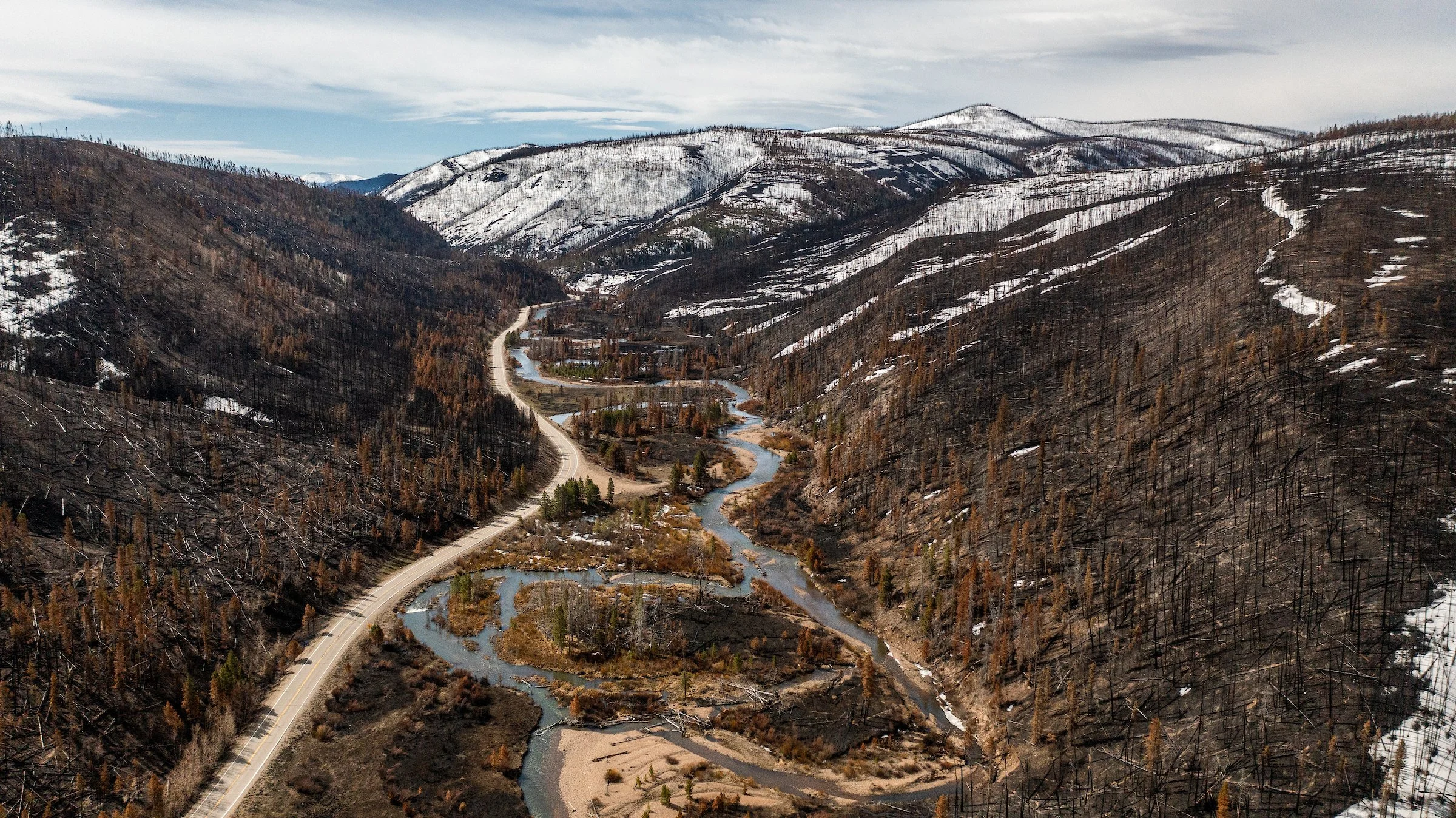

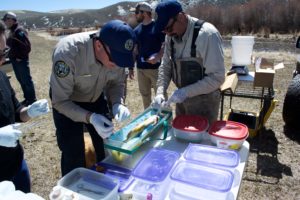 For this project, the chapter and partners purchased 15 RF tags that were surgically implanted into various fish in Tomichi Creek, a tributary of the Gunnison River. By attaching the RF tags to the fish in the creek, the chapter, CPW, and the partners involved could follow these trout and see what kind of movement they did and provide more information as to what causes fish to move.
For this project, the chapter and partners purchased 15 RF tags that were surgically implanted into various fish in Tomichi Creek, a tributary of the Gunnison River. By attaching the RF tags to the fish in the creek, the chapter, CPW, and the partners involved could follow these trout and see what kind of movement they did and provide more information as to what causes fish to move.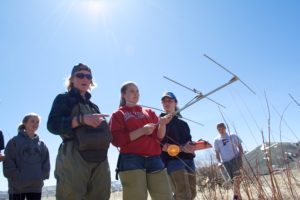 "We have had a few fish travel a pretty good distance. One fish in particular, which was tagged at the Lower Tagging Location, hung out in the same area we had released him in for several weeks. Then right around the same time the runoff started picking up he bolted upstream and was last detected near the confluence of Tomichi and Cochetopa Creeks. A run of over eight miles," said Wiles. "Now there is another tagged fish that has run nearly as far. This leads us to consider that the two missing fish may be farther up the Tomichi. This has effectively expanded our search area from a five mile stretch to who knows how big. Careful what you wish for."
"We have had a few fish travel a pretty good distance. One fish in particular, which was tagged at the Lower Tagging Location, hung out in the same area we had released him in for several weeks. Then right around the same time the runoff started picking up he bolted upstream and was last detected near the confluence of Tomichi and Cochetopa Creeks. A run of over eight miles," said Wiles. "Now there is another tagged fish that has run nearly as far. This leads us to consider that the two missing fish may be farther up the Tomichi. This has effectively expanded our search area from a five mile stretch to who knows how big. Careful what you wish for."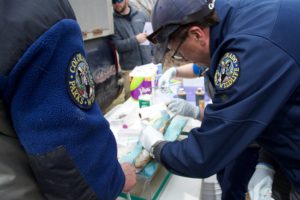 With help from a $2,500 grant from New Belgium Brewing, the chapter is expanding the project to include a website that will have a map of the Tomichi and points to where each fish is located.
With help from a $2,500 grant from New Belgium Brewing, the chapter is expanding the project to include a website that will have a map of the Tomichi and points to where each fish is located.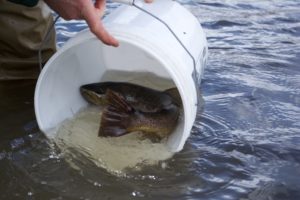 “I wanted to get the program going locally to help students develop more awareness and appreciation for our watershed and I thought the experience might generate some interest in resource management career paths,” said Jesse Kruthaupt, Upper Gunnison Project Specialist for TU. “In addition to those benefits, understanding trout behaviors in this area will be a very useful discussion making and monitoring tool for future restoration work. TU couldn’t have done this alone, Colorado Parks and Wildlife and the Upper Gunnison River Water Conservancy District deserve a big ‘Thank You’ for helping to make this happen.”
“I wanted to get the program going locally to help students develop more awareness and appreciation for our watershed and I thought the experience might generate some interest in resource management career paths,” said Jesse Kruthaupt, Upper Gunnison Project Specialist for TU. “In addition to those benefits, understanding trout behaviors in this area will be a very useful discussion making and monitoring tool for future restoration work. TU couldn’t have done this alone, Colorado Parks and Wildlife and the Upper Gunnison River Water Conservancy District deserve a big ‘Thank You’ for helping to make this happen.”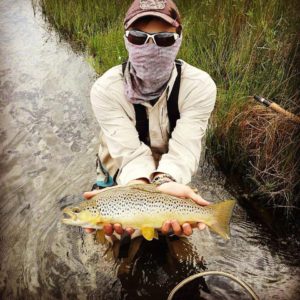
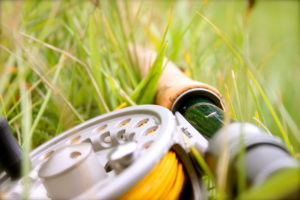
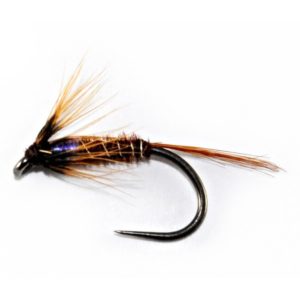
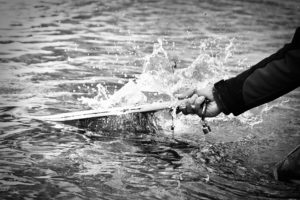 Thus it is best to keep a fish in the water as much as possible, with a photo being taken swiftly- holding the fish only a few inches above the water.
Thus it is best to keep a fish in the water as much as possible, with a photo being taken swiftly- holding the fish only a few inches above the water.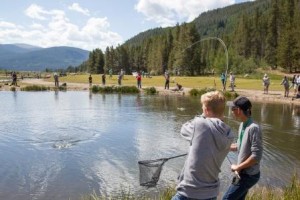
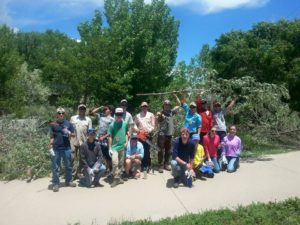
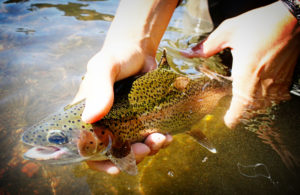
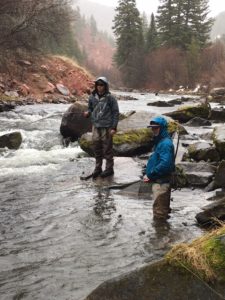 "It means a lot to me to be nominated as one top ambassadors in the Nation," said Muench. "I've easily put in a similar amount of time into the club as I have my final year of Engineering, I care a lot about the fly fishing club and it's amazing to realize that you're one of the best in the nation. No matter how much work I put in, I keep finding myself wondering if we could have done it better and what we've done wrong. It's just something else to have someone else say you're one of the best in the Country."
"It means a lot to me to be nominated as one top ambassadors in the Nation," said Muench. "I've easily put in a similar amount of time into the club as I have my final year of Engineering, I care a lot about the fly fishing club and it's amazing to realize that you're one of the best in the nation. No matter how much work I put in, I keep finding myself wondering if we could have done it better and what we've done wrong. It's just something else to have someone else say you're one of the best in the Country."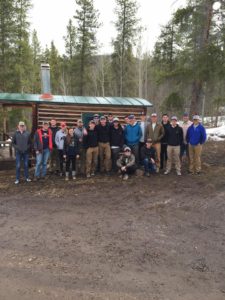
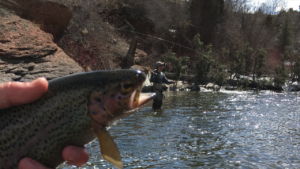 The success of the club doesn't stop there. David is hoping that the new president, Ryan Watson, will take the club even further and continue to expand, as well as have an improved focus on conservation.
The success of the club doesn't stop there. David is hoping that the new president, Ryan Watson, will take the club even further and continue to expand, as well as have an improved focus on conservation.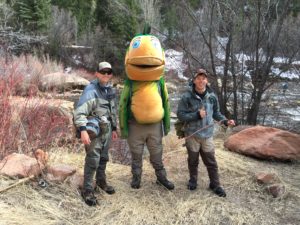 Being in the fraternity of a select few Costa Ambassadors, the role doesn't stop after graduation. Muench plans to continue to stay involved with TU and make a difference for Colorado's rivers and trout.
Being in the fraternity of a select few Costa Ambassadors, the role doesn't stop after graduation. Muench plans to continue to stay involved with TU and make a difference for Colorado's rivers and trout.